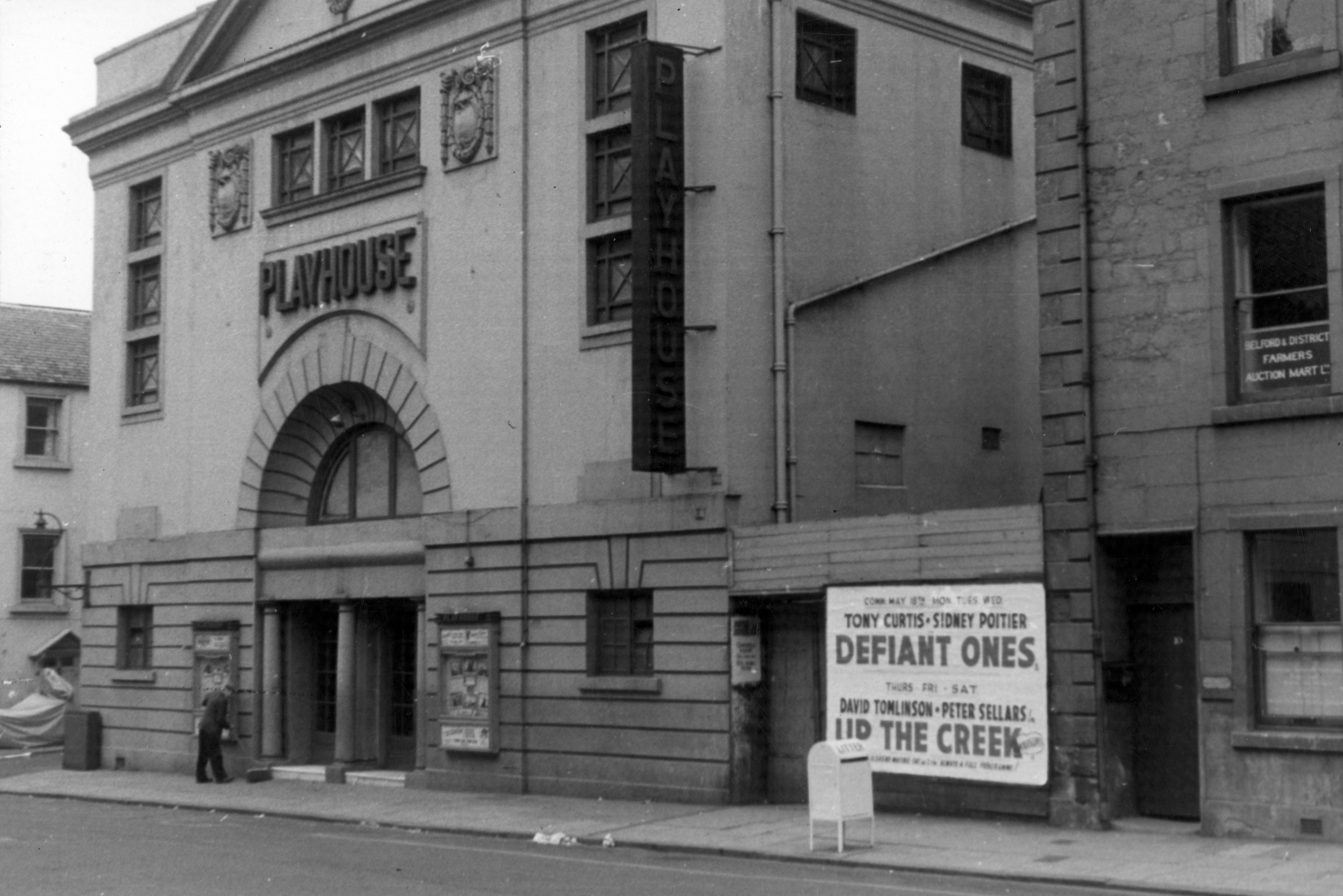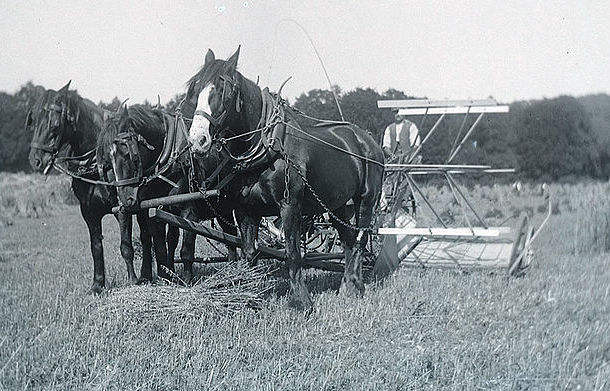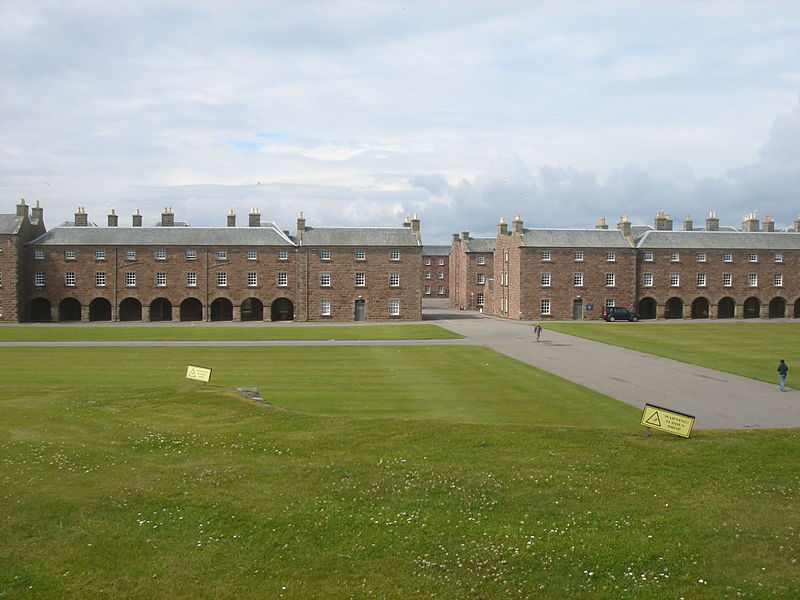Hugh Vaughan Charlton
Hugh was born 1883, in London the eldest son of Mr John Charlton, who was a well-known Painter of 6 William Street, Knightsbridge, London and 24 Windsor Street, Newcastle. Hugh’s father was born in Bamburgh, Northumberland on 28 June 1849 and was an artist of some note. He debuted at Royal Academy in 1870 and decided to move to London, where Hugh was born. He painted Hugh and his brother John sitting with their grandmother, the painting has since been lost. He did a Posthumous portrait of John that was exhibited in Spring 1917.
On the 1911 census Hugh was living 44 Beverley Terrace, Cullercoats, Tynemouth as an Artist Painter. He was educated at The Mount, Northallerton and Alderham School, Watford, Herts. He also studied at Armstrong College, Newcastle-upon-Tyne and joined the O.T.C. [Officers Training Corps] while there. He obtained his commission in August 1915 and went to France on 13 March 1916.
Hugh was an artist of promise and the ‘Yorkshire Post’ on 27 December 1916, published the total of his will – £3858. Killed in action, struck by a bomb from a trench mortar. His obituary was published on 1 September 1916 in “British Birds” journal (along with obituary to his brother John MacFarlane Charlton):-
LIEUTENANT HUGH VAUGHAN CHARLTON, NORTHUMBERLAND FUSILIERS – Fell in action near Whychaate, on June 24th, 1916, struck by a bomb from a trench mortar. He was thirty-two years of age, and joined the Armstrong College O.T.C., receiving his commission in August of last year. He also, was a clever ornithologist, and the brothers worked much together, though Hugh’s inclinations leaned towards animal painting, for which he studied in Newcastle, Edinburgh and London. Birds were his speciality; his work was very artistic and he had a fine sense of colour and beauty in nature and in art, and was a sound critic. His paintings had already been hung in exhibitions in the cities where he had carried on his studies. One of his pictures, “The Home of the Dipper,” was exhibited in the Royal Academy of 1912.
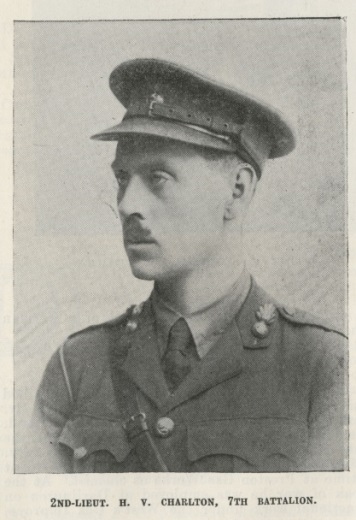
As an officer he had earned warm tributes of affection from his Colonel and comrades, he devoted all his energies to his military duties, and, what makes his death doubly sad, is the knowledge that he had, a few days before, received an important appointment on the Staff.
Both the Charlton’s were keen sportsmen, taking special interest in wildfowling, for which they had exceptional opportunities on the Northumberland coast. It may truly be said of them that they would have shone in whatever profession they choose. They were patterns of honour, integrity and gentlemanly character, as well as being charming companions. The writer deeply deplores their untimely death, a feeling that is shared by all who knew them, and lovers of natural history will regret that ornithology has lost two students of great promise. Their father is Mr. John Charlton, the well-known artist, of Knightsbridge, S.W., and Newcastle-on-Tyne. On their mother’s side they were great-grandsons of the late John Vaughan, one of the pioneers of the Cleveland Iron Trade and grandsons of the late Thomas Vaughan, of Gunnergate Hall, Middlesbrough.
Newcastle Journal 24 July 1916 – PUBLIC NOTICES. A MEMORIAL SERVICE in Memory of LIEUTENANT H.V. CHARLTON and CAPTAIN J.M. CHARLTON, both of the Northumberland Fusiliers, sons of Mr John Charlton, of Banks House, Lanercost, and Newcastle-on-Tyne, will be held in LANERCOST ABBEY, on THURSDAY, July 27th, at 3.15 p.m. Conveyances will meet the train from Newcastle at Brampton Junction at 2.40, and will be at the Abbey after the service in time for the 4.45 train to Newcastle for those who wish to return by it.
Daily Gazette for Middlesbrough 24 July 1916 – TWO BROTHERS KILLED. Amongst North-country officers who have fallen in action in France are the two sons of Mr John Charlton, the eminent animal painter, of Knightsbridge, London, and Newcastle upon Tyne. The elder son, Lieutenant Hugh Vaughan Charlton, Northumberland Fusiliers, named after his grandfather, the late Mr Thomas Vaughan, of Gunnergate Hall, Middlesbrough, was killed on 24th June; and the younger, Captain John Macfarlane Charlton, on 1st July (the 25th anniversary of his birthday). Lieutenant Charlton joined the O.T.C., Armstrong College, and received his commission in August last year. Captain Charlton, who was educated in Uppingham, enlisted in the Northumberland Hussars, and was afterwards attached to the Tyneside Scottish. Both the deceased officers were keen naturalists and sportsmen. St. George’s Church, Cullercoats.
Roll of Honour August 1916 – To Mr John Charlton in the death of both his sons, young men who promised to make their mark in the world. His grave is in La Laitere Military Cemetery, south of Ieper (Ypres). Grave Reference: VI. A. 7.
John Macfarlane Charlton
Born 1891 in Kensington, London, son of Mr John Charlton, the well-known painter of 6 William St, Knightsbridge, London. John joined the Northumberland Yeomanry, Oct. 1914 and received a commission in the 21st Battalion in November the same year.
After volunteering in 1914, Captain Charlton trained with his battalion, the 21st Northumberland Fusiliers (Tyneside Scottish Brigade) throughout 1915. In 1916, the Brigade embarked for France and experienced life in the trenches on the Western Front in the early months of 1916. A few days before John was killed he wrote to a wife of a fallen soldier;-
“Dear Mrs Welsh, I expect by now you will have heard of the death of your husband Corporal Welsh. I write these few lines to express my admiration of your husband. The day previous to his death, he held out with his section against the enemy and by rapid firing under heavy shell fire, he helped greatly in maintaining the position. I congratulated him on the way he had held on and he replied his motto was ” never say die” I only wish I had more of his like in the company, and I want you to try and feel that in laying down his life as he has done, he has won the admiration and love of his, comrades and officers. My brother officers and myself wish to express to you our deepest sympathy to yourself and your children in your great sorrow. Yours Sincerely, J. M. Charlton, Captain.
On 1 July 1916 the Northumberland Fusiliers were in the front line with orders to attack the German strong point of La Boiselle. At exactly 07.30 Captain Charlton and the other Company commanders led their men into No Man’s Land towards the German lines. As the British troops reached the point of no return, machine gun crews of the Bavarian Infantry Regiment subjected them to withering fire. Despite heavy casualties some troops reached the German second line, but attempts to gain a foothold in La Boiselle failed. Captain Charlton and Captain Herries with 6 men were isolated in a crater and unable to advance because of heavy fire. They eventually obtained a machine gun and advanced. Herries reported how Charlton was killed.
“For a while we did great execution but the gun jammed at a critical moment. Charlton was shot down while attempting to charge a German strong point and the initiative passed to the enemy.” The 20th & 23rd Battalions, Northumberland Fusiliers had practically ceased to exist and only the remnants of the 21st and 22nd Battalions, some 200 men and seven officers, remained holding the line. After suffering great hardships, at midnight on 3 July, these men made their way back to the British lines.
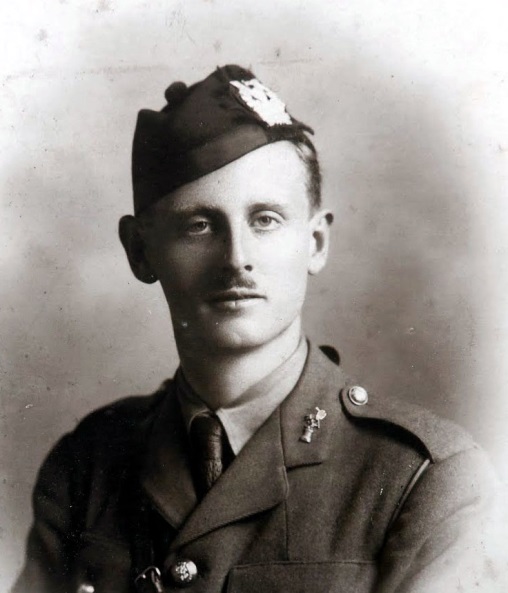
The total number of casualties sustained by the 4 Battalions of Northumberland Fusiliers was 2,438 killed, missing or wounded. The 21st Battalion alone recorded 11 officers killed, 10 wounded, other ranks killed 161, wounded 478. The survivors from the whole Brigade barely comprised one Battalion and the Brigade was pulled from the line.
He was killed in the attack on La Boisselle while leading his men, having assisted to capture the 1st & 2nd lines in German trenches and about to attack the 3rd. His brother Captain Charlton was killed in June 1916. He was Mentioned in Despatches on 13th Nov. 1917, over a year after his death. He had, at an early age, shown conspicuous ability in an illustrated essay on “The Birds of the Fame Islands, “while competing for the John Hancock prize of the Natural History Society of Northumberland in 1903, regarding which the late Canon Tristram wrote to him that he had had the duty of adjudicating upon the essays, and although Charlton did not win the prize, the Canon was so pleased that he gave him a special present for his work. In Dec. 1910 he won a special bronze medal given by the Royal Society for the Protection of Birds [VOL. X.] CAPT. J. M. AND LT. H. V. CHARLTON. 91 (Public Schools Competition); in 1912 he wrote “The Birds of South-East Northumberland “for the Zoologist, which was later published in pamphlet form, with map and illustration. In 1913 ” Notes on Norwegian Birds “appeared in Country-Side, and afterwards as a ” separate “paper ; he also supplied British Birds with a number of interesting notes, commencing with Vol. IV., and wrote many short articles in other journals and local papers.
He was a most skilful and artistic taxidermist, his methods of mounting birds in natural positions being, as a near relative of his observed, ” equal even to those of my dear old friend, John Hancock,” whose work both Charlton and his brother so much admired. The writer is of opinion that he would have made a great name, if he had been spared to continue his studies, in that branch of ornithology alone.
As a soldier he had won golden opinions from his superior officers, and also from the men under him, and before the attack in which he fell, had already greatly distinguished himself, and been recommended for the Military Cross. He left £5, 737 in his will. CHARLTON, John MacFarlane [Captain] joined the Northumberland Yeomanry October 1914, received a commission in the 21st in Nov. same year. He was killed in the attack on La Boisselle while leading his men, having assisted to capture the first and second line in German trenches and about to attack the third. His brother Captain Charlton was killed in June 1916. He was Mentioned in Despatches on 13th November 1917, over a year after his death.
John was 25 years old when he died on 1st July and is remembered on Thiepval Memorial Pier and Face 10 B 11 B and 12 B.


